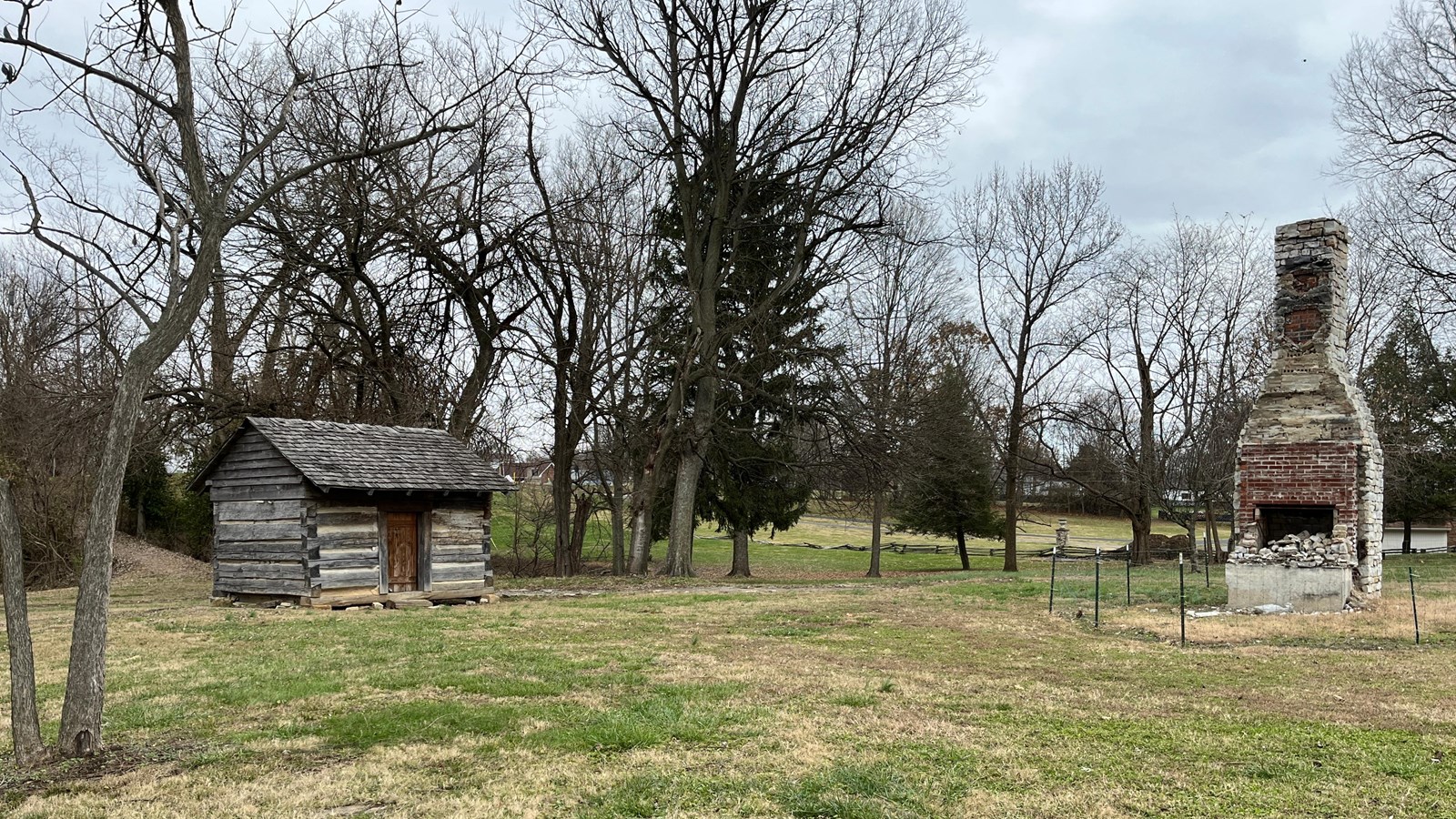Last updated: September 19, 2025
Place
George Rogers Clark Home Site

Boat Ramp, Cellular Signal, Historical/Interpretive Information/Exhibits, Information, Information - Ranger/Staff Member Present, Parking - Auto, Parking - Boat Trailer, Parking - Bus/RV, Picnic Shelter/Pavilion
The George Rogers Clark Home Site is a 7-acre tract of land that makes up part of the Falls of the Ohio State Park. George Rogers Clark, a revolutionary war general, the town’s founder, and William Clark’s older brother, built his home here in 1803 as a place to spend his retirement years. He stayed here until 1809, at which time he suffered a serious burn that resulted in the amputation of his leg. As a result of the injury, he was forced to move in with his sister at her farm outside of Louisville, Kentucky.
Although his younger brother, William, would go down in history as part of the Lewis and Clark Expedition, George was a noted hero of the American Revolution in his own right. He was a skilled surveyor and used those skills to take the fort at Kaskaskia, Illinois, as well as Prairie du Roche and Cahokia. He also convinced several Indian tribes to stop allying with the British.
Clark’s home served as an important stopping point for those traveling along the Ohio River. On October 15, 1803, Meriwether Lewis stopped here to meet with William Clark. Together, the two recruited nine men, thus forming the Corps of Discovery that departed from this location on October 26, 1803.
*Please Note* The cabin burned down in 2021, however the site remains open to the public. For more information, call the Falls of the Ohio Visitor Center at (812) 280-9970.
Directly behind it is a replica of the McGee Cabin. This structure isn’t in its original location, as the McGees lived in Guinea Bottoms, one of the first freed African-American communities in the Northwest Territory. It was erected here to tell the story of Venus and Ben McGee, who were George Clark’s indentured servants.
Visitors can tour the home site daily from 7:00 a.m. to 11:00 p.m. The cabin itself is open seasonally on weekends. For more information, call the Falls of the Ohio Visitor Center at (812) 280-9970 or visit the website at https://www.fallsoftheohio.org/portfolio/outdoor-activities/george-rogers-clark-home-site/.
The George Rogers Clark Homesite at Falls of the Ohio is a High Potential Historic Site (HPHS) of the Lewis and Clark National Historic Trail. Here is the text from the HPHS report:
Lewis and Clark came together on October 14, 1803, after about six weeks and over 600 miles traveled by the expedition from Pittsburgh. The Louisville Farmer’s Library reported the following day, “Captain Lewis arrived at this port on Friday last. We are informed, that he has brought barges &c. on a new construction, that can be taken in pieces, for the purpose of passing carrying places, and that he and captain Clark will start in a few days on their expedition to the Westward.” Lewis and Clark continued preparations to head west while staying at the cabin of George Rogers Clark. Many of the recruits for the expedition joined them here, including Nathaniel Pryor, William Bratton, and brothers Reubin and Joseph Field. The expedition departed from the mouth of Mill Creek the afternoon of October 26.
At the time of the expedition, the Falls of the Ohio River were the only major navigational barrier on the Ohio River. Improvements began in 1830 with the construction of the first locks. A hydroelectric dam was added in 1927, and the McAlpine Dam and Locks were expanded and improved in the 1960s. The Falls were named a National Natural Landmark in 1966. Falls of the Ohio State Park was established in 1981 on the Indiana side of the river. At the entrance to the park near the interpretive center is a prominent statue commemorating the meeting of Lewis and Clark. The Old Clarksville Site, which featured a replica of George Rogers Clark’s log cabin until a fire destroyed the structure in May 2021, is included in the park.
Lewis and Clark NHT Visitor Centers and Museums
This map shows a range of features associated with the Lewis and Clark National Historic Trail, which commemorates the 1803-1806 Lewis and Clark Expedition. The trail spans a large portion of the North American continent, from the Ohio River in Pittsburgh, Pennsylvania, to the mouth of the Columbia River in Oregon and Washington. The trail is comprised of the historic route of the Lewis and Clark Expedition, an auto tour route, high potential historic sites (shown in black), visitor centers (shown in orange), and pivotal places (shown in green). These features can be selected on the map to reveal additional information. Also shown is a base map displaying state boundaries, cities, rivers, and highways. The map conveys how a significant area of the North American continent was traversed by the Lewis and Clark Expedition and indicates the many places where visitors can learn about their journey and experience the landscape through which they traveled.
